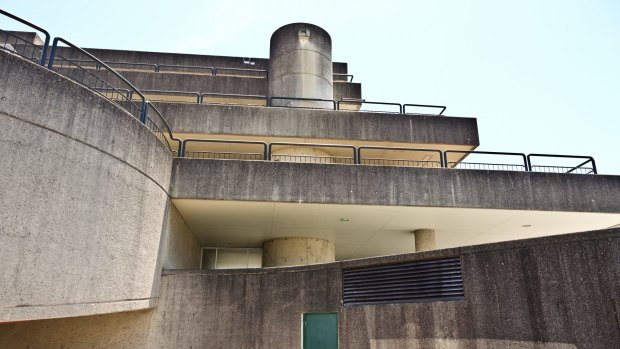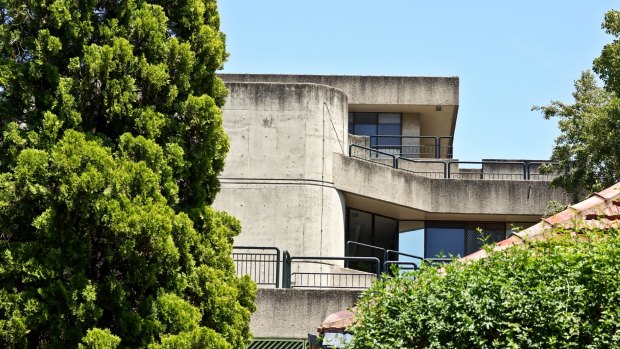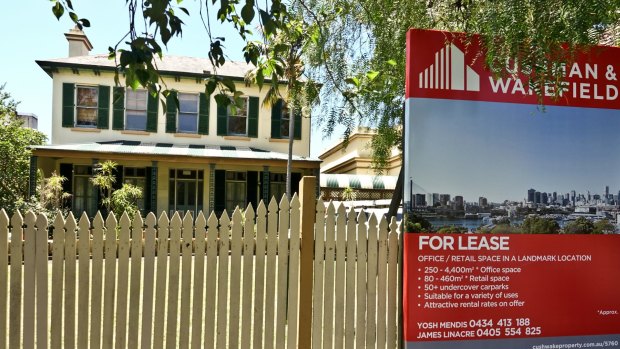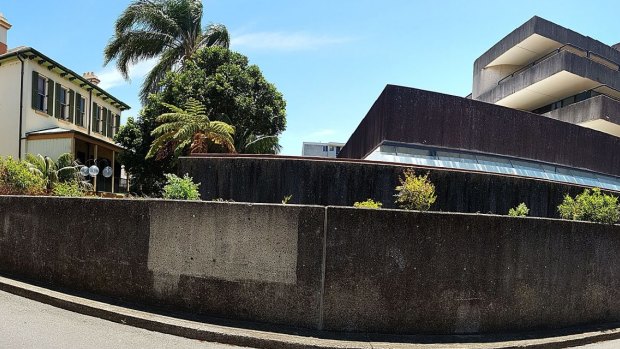By Jacob Saulwick
Facing Glebe Point Road is a Victorian villa, Bidura House, 160 years old and preserved, as far as these things can be, on the State Heritage Register.
Behind Bidura House, in an unusually discreet location for a public building, sits a former Children's Court and remand centre. Unlike the Victorian villa, the Children's Court and Metropolitan Remand Centre (MRC) may not be long for this world.

The brutalist Bidura Remand Centre was designed by the NSW Government Architects Office and opened in 1983Credit: Ben Rushton
But the City of Sydney and local architects are fighting a rearguard battle to preserve the former remand centre, built in the early 1980s and designed by the then NSW Government Architects Office in a style commonly known as brutalist.
The MRC was sold by the government three years ago, and the children's court sat for the last time in July.

The remand centre in Glebe is subject to a redevelopment proposal. Credit: Ben Rushton
The purchaser, Vision Land Glebe, has applied for development approval to dismantle the structure to build an apartment block. Last year, commissioner Annelise Tuor of the Land and Environment Court ruled against a proposed development because of its negative impact on the adjacent Victorian villa.
But court hearings on subsequent development applications are due in 2018.
Last week, the Central Sydney Planning Committee, made up of representatives from the state government and City of Sydney, voted to recommend to the Heritage Council that it recommend the court and remand centre for heritage listing.
And the committee also approved a request to rezone the MRC to lower any potential development of the site to the height of the neighbouring villa.

The heritage-listed Bidura House in Glebe. Credit: Ben Rushton
For the architects and heritage advocates who are keen to preserve the MRC, the structure is not just of interest for its aesthetic qualities, but for the way in which it was designed as a modern response to its Victorian streetscape.
At the insistence of then premier Neville Wran, the NSW Government Architects Office constructed a model of the building to demonstrate how it could fit in with the fine-grained Glebe streets, architect David Burdon said.

The Victorian Bidura House on the left with the remand centre on the right.Credit: Ben Rushton
"It could have been any style and it could have not fitted," he said.
"The fact that they did it with a brutalist style makes it all the more remarkable."
Phillip Thalis, the architect and City of Sydney councillor, said merely "jackhammering" the court building would not be a good outcome.
"I think it's worthy of adaption," he said.
"The building has a lot of embedded energy; it's built to last. You should be able to do something intelligent with the building, even if it is a fairly radical change."
The director of heritage conservation in the faculty of architecture, design and planning at the University of Sydney, Cameron Logan, said cities were better for preserving structures about which people had ambivalent views.
"In some cases we have to go out on a limb and protect places precisely because we disagree about them, and we want to argue about them," Dr Logan said.
"And what will replace it, if it is destroyed, we are unlikely to disagree about. Everyone will just ignore it or regard it as awful."
The planning proposal to reduce the height and floor-space ratio on the MRC site will be submitted by the City of Sydney to the Greater Sydney Commission.